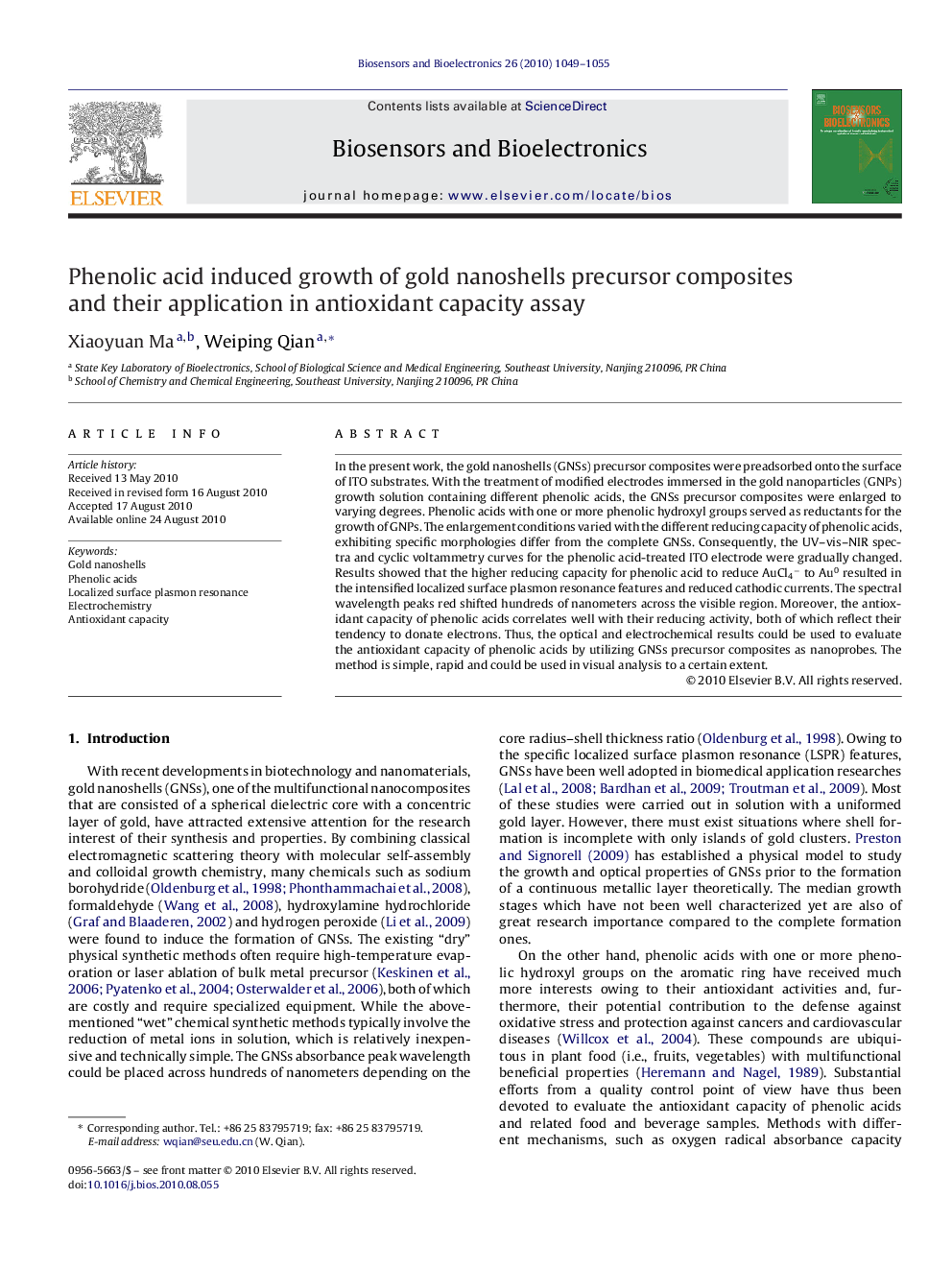| Article ID | Journal | Published Year | Pages | File Type |
|---|---|---|---|---|
| 867908 | Biosensors and Bioelectronics | 2010 | 7 Pages |
In the present work, the gold nanoshells (GNSs) precursor composites were preadsorbed onto the surface of ITO substrates. With the treatment of modified electrodes immersed in the gold nanoparticles (GNPs) growth solution containing different phenolic acids, the GNSs precursor composites were enlarged to varying degrees. Phenolic acids with one or more phenolic hydroxyl groups served as reductants for the growth of GNPs. The enlargement conditions varied with the different reducing capacity of phenolic acids, exhibiting specific morphologies differ from the complete GNSs. Consequently, the UV–vis–NIR spectra and cyclic voltammetry curves for the phenolic acid-treated ITO electrode were gradually changed. Results showed that the higher reducing capacity for phenolic acid to reduce AuCl4− to Au0 resulted in the intensified localized surface plasmon resonance features and reduced cathodic currents. The spectral wavelength peaks red shifted hundreds of nanometers across the visible region. Moreover, the antioxidant capacity of phenolic acids correlates well with their reducing activity, both of which reflect their tendency to donate electrons. Thus, the optical and electrochemical results could be used to evaluate the antioxidant capacity of phenolic acids by utilizing GNSs precursor composites as nanoprobes. The method is simple, rapid and could be used in visual analysis to a certain extent.
